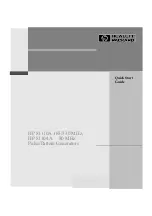
PowerSpout
TRG installation 2018
Last revised July 2018
© 2018 EcoInnovation Ltd (NZ)
Page 31
Optimising the turbine RPM
Turbine speed will vary with battery voltage and output wattage. Tests should be done
under typical conditions.
Adjustment of turbine RPM using packing washers behind the magnet rotor
This is a trial-and-error process. Moving the magnet rotor outward, away from the stator will
increase RPM (if it is too slow) whereas moving it further onto the stator will reduce RPM.
Start by grasping the extractor knob and turning it anticlockwise relative to the magnet rotor.
Keep a note of the number of turns. Run the turbine, check the output current, stop the
turbine, adjust the knob on the magnet rotor, run and test again. Once you have found the
best position for the rotor you can pack behind it with washers to lock it gently in that
position. Do not over-tighten the plastic nut. Each washer (supplied) is 1.75 mm thick, and
each turn of the knob is 1.6mm. The red washer (if supplied) is fitted first.
Optimum magnet rotor position will vary slightly with changing pressure (smaller jets used for
lower flows will increase the pressure by reducing losses) and also with changing battery
voltage. You may need more washers at lower flows, or lower battery voltage. Optimisation
can be repeated when flow conditions change markedly (differing jet sizes used) so you can
decide what compromise to make with the packing and what penalty you will pay for not
changing it. The extent of the impact will depend on whether your percentage pressure
losses are large at maximum flow/power. Remove one washer for a 10% drop in pressure.
Take note of the number of magnetic rotor packing washers required for a particular jet size
and when running on one or two jets. In some cases you may wish to change the packers
with the corresponding jet sizes as your river flow changes with the seasons. Hang the jets
and packing washers on nails in your power shed for wet, normal and dry period flows.
2.3.5.
Commissioning (models TRG40, 80 or 200) connected to MPPT or GTI
Install an earth connection on the exposed metal baseplate. A labelled earth connection
point is provided - protective class 1. Do not connect a DC pole to earth at the turbine -
unless local rules require it.
Provide a clearly labelled, DC rated, disconnection device at the turbine. A 2-pole DC
breaker is best, but “MC4” type waterproof connectors may be used provided they are never
opened under load.
All wiring must be enclosed for safety so that it is inaccessible to touch.
An EMC filter must be fitted in all grid-connected installations.















































